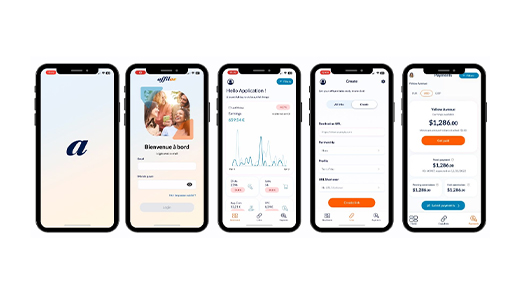Resolving click discrepancies
It is common when you analyse the performance of your partnerships through several different tracking tools such as Google Analytics, Affilae, Instagram, Facebook Ads etc., to have differences in the data feedback and especially in the clicks collected.
Why is this? As all marketing tools are different, there are several causes that can impact click tracking.
This short guide will enable you to understand the first causes and give you the key information to go further.
Our teams also remain available to go further in the analysis with you and find marketing and technological solutions to reduce these performance gaps.
It should be noted, however, that gaps from 10 to 20% are considered normal.
Common causes of discrepancies
Compare the configuration of the campaigns with regard to the settings on clicks
The configuration of marketing campaigns can take into account several parameters that can limit the number of clicks on your partners, including:
➜ Session duration
On Affilae, like other tools, you can configure a duration between two identical clicks from the same user (same IP) so that not all the clicks from a user on the same link are counted, but only the clicks that are considered unique: this is the session duration.
This makes it possible to obtain a conversion rate that is adjusted to the reality of Internet users’ browsing.
The number of unique clicks will therefore always be lower than the number of gross clicks.
For example, in Google Analytics it is set to 30mins by default, is that also the case for your Affilae program?
(see the global settings of your program)
➜ Geotargeting of campaigns
In certain cases you can activate the tracking of clicks for a specific country or geographical area, this is the geotargeting of campaigns.
If you decide, for example, to limit click tracking to France, then only clicks collected on French IPs will be tracked and counted by Affilae. Clicks tracked outside of this area will be ignored by Affilae and blacklisted, and will not result in conversions.
(see the global settings of your program)
➜ Anti-fraud protections
Affilae automatically includes anti-fraud protections for clicks, allowing us to protect you thoroughly against malicious actors or clicks from robots that are not relevant to the analysis of your partner’s performance.
Here is an article on affiliate fraud that will allow you to better understand our action and how we try to prevent it.
These parameters can be activated / deactivated at any time through our tracking scripts. Here is the documentation for your reference.
➜ Measures to protect the personal data of Internet users
We live in a data-driven world and for several years, we have observed the development of various measures to protect personal data when browsing Internet users.
These metrics come both from attempts to regulate Internet users themselves, such as the growth of adblockers or VPNs; as legal regulations such as the GDPR, Cookie Walls or even more recently the initiatives of United Kingdom with the ICO (Information Commissioner’s Office) and European developments to come with the e-Privacy regulation.
For example, you have just implemented a non-permissive cookie wall, and that your customer refuses to give you his consent to the collection of his data, then you will not be able to track clicks and conversions. (depending on the tracking method implemented).
➜ The tracking method used
We offer several tracking methods including: Classic JS tracking scripts, redirection, API’s, Server-to-Server etc.
Unfortunately, these methods are not all equally reliable. For example, tracking scripts in javascript are a simpler and quicker technology to implement on a website, but are subject to numerous hazards that can impact their triggering.
These include: adblockers, cookie banners (ICO / User consent), poor technical implementation, deduplication / attribution.
On the other hand, for example, the Server-to-Server or the implementation of an API allows for the automation of clicks and conversions and are considered to be much more reliable methods.
Indeed, since it is the brand, the advertiser, that brings the data collected back to the source, the accuracy is supposed to be more absolute.
The Bit.Ly case (or similar URL shortener)
The bit.ly case | The type of tracking URL used
Affilae offers different types of tracking URLs: direct links (mywebsite.com/#ae1) and redirects (https://affilae.com/xxxxxxx).
To illustrate this difference, we will take the example of bit.ly which uses redirection links and the use of direct links on Affilae.
The difference is essentially in the moment when the click is counted but that is not the only difference.
Explanations:
➜ Reason #1 – Clicks VS Sessions
The way Bit.ly works is that it encapsulates your initial link and redirects to your site. The click is then counted when the user clicks on the link.
The problem is that you don’t know if the customer really arrived on the site, if they really loaded the page or if they left before the page loaded.
Conversely, with Affilae, as we saw before, you use direct links without redirects. From A to B, with no third party tracking or advertising between you and your partner.
In other words, Affilae counts sessions and Bit.ly counts clicks. Now you can see the difference.
- Bit.ly counts clicks. If a user clicks several times on a link or if the clicks come from the same bot, each click is counted
- Affilae measures sessions. Multiple page views from the same user are tracked as one session
- When comparing data between Bit.ly and Affilae, comparing clicks to sessions is like comparing apples to oranges
➜ Reasons #2 – Bot traffic
Bit.ly counts clicks from bots, unless they are known bots or if there is a high rate of click activity from an IP address, they only consider this bot traffic for a certain period of time. (See bit.ly support)
With Affilae it’s not the same, as the click is counted when the page is loaded and not when the link is clicked, we have embedded different anti-click fraud technologies and in particular the detection of a human mouse movement on the page.
➜ Reason #3 – Unintentional clicks
Let’s take the example of Instagram, of links posted in stories. They generate a lot of traffic due to different browsing habits from the desktop and the slightest click, even unintentional, can trigger tracking and the link to the advertiser’s page, even if the user immediately goes back without having loaded the page.
This happens every day, these are unintentional clicks but they are still counted with Bit.ly.
Why is there a difference with Affilae?
With Affilae or even Google Analytics, we count the clicks when the customer arrives on the page to which you send the user (landing page), the script is loaded when the user actually displays the page.
This is much more secure in terms of tracking because we are sure that the user has seen the page. This is in line with the recommendations of the IAB (Internet Advertising Bureau) for the last 5 years, in order to fight against click fraud in particular, but also to obtain data that is as close as possible to the behaviour of Internet users.
To complete:
Of course, these elements are possible answers and in any case, you must check these hypotheses and possible scenarios yourself in order to choose the tracking method that makes the least difference between your different tools.




